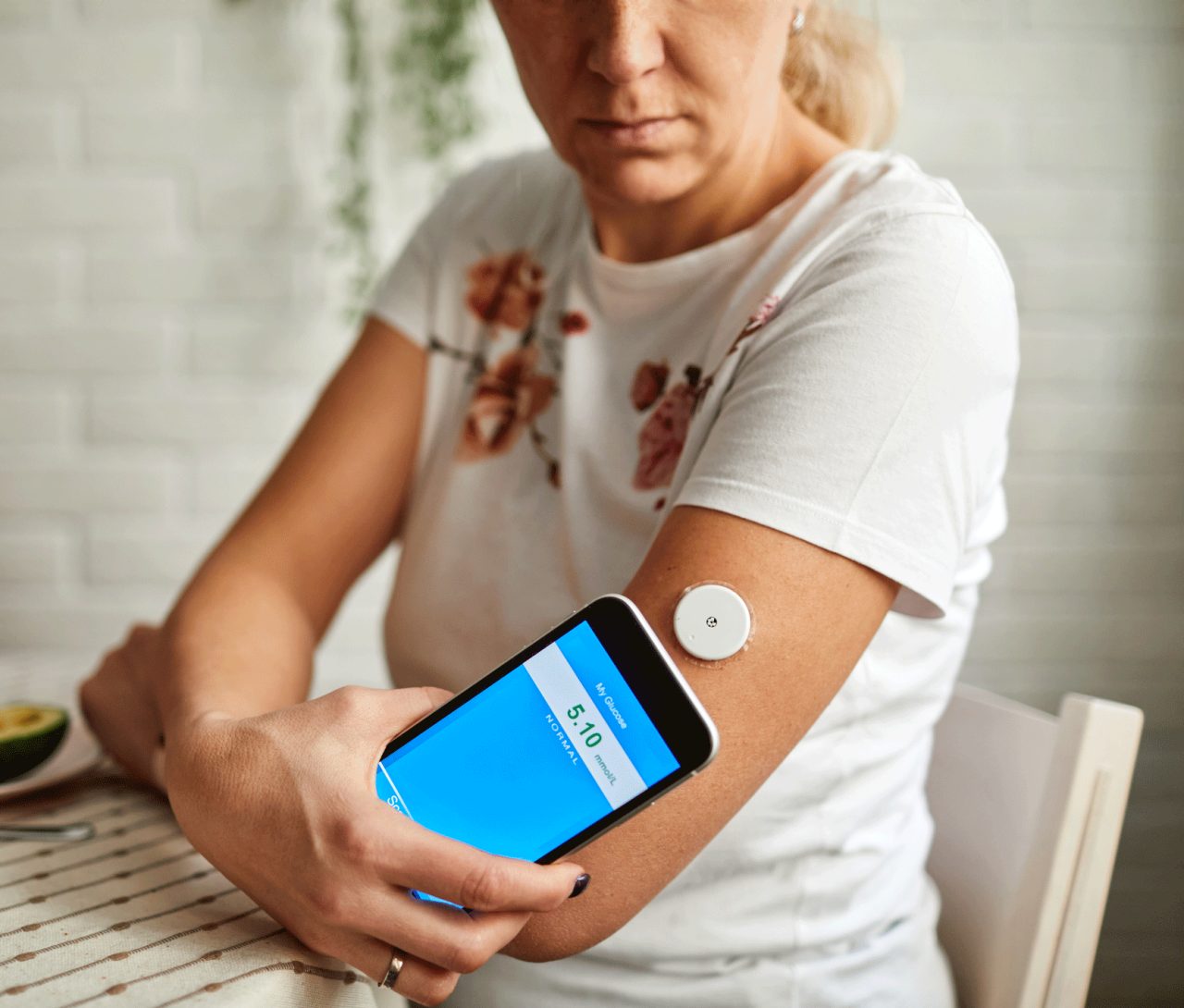Do You Need to Monitor Your Blood Sugar Better?

Are you pricking your finger several times a day to monitory your type 2 diabetes? A continuous glucose monitor could help. Here’s what you should know.
Many patients with type 2 diabetes use finger-prick glucose tests to make sure they take the medication they need to keep their blood sugar stable. A device called a continuous glucose monitor (CGM) could help them.
Patients and primary care doctors are becoming more aware of this option. It’s hard, however, to get insurance coverage for the device or find a doctor who can take on this battle.
Not everyone needs a CGM. But the big picture is that people need more help with diabetes: fewer than half of U.S. patients meet their blood sugar targets.
YOU MIGHT ALSO LIKE: Complications of Diabetes
Who can benefit from a CGM?
Endocrinologists, specialists in hormone management, have been prescribing CGMs to type 1 diabetes for more than a decade.
Medicare covers CGMs for type 2 patients on intensive insulin, who use a pump or inject themselves at least three times in a day, after evidence emerged that the devices help this group. Many insurance companies follow Medicare’s lead.
Research now suggests that a CGM could help another group, type 2 patients who take longer-acting basal insulin only once or twice a day. One study found that when these patients used a CGM for eight months their A1C, a measure of average blood sugar over three months, dropped by 1.1 percent. Another study found that patients who used CGMs went to the ER less often and were less likely to be hospitalized for hypoglycemia, or low blood sugar (the device didn’t affect visits or hospitalizations for high blood sugar. Both high and low blood sugar can put you in a diabetic coma.
How a CGM works
A tiny sensor is inserted under the skin of your belly or arm. It stays there, measuring the glucose in the fluid between your cells, called interstitial glucose, every few minutes. A wireless transmitter sends the data to a monitor.
How to get a CGM
Endocrinologists are most familiar with CGMs, but it can be hard to land an appointment with one: More than 30 million Americans have type 2 diabetes, and there are only about 8,500 endocrinologists in the country. You can ask your primary care doctor or look for one who is familiar with CGMs. Your doctor will need to read what’s called an ambulatory glucose profile.
“If you ask a primary care provider: ‘Do you think that people with diabetes that you’re seeing in your clinic might benefit from CGM?’ They’d probably say, ‘Probably, but I don’t have the time,’” said Mahmood Kazemi, MD, chief medical officer for the diabetes care division of medical device company Abbott.
What you can do to manage your diabetes
You probably know the basics, but sometimes it’s hard to follow through. We all need to exercise regularly, eat lots of non-starchy vegetables, avoid processed food, and quit smoking and limit alcohol. It may help to keep a journal recording your insulin and other medications, the food you eat (especially carbs), physical activity, stress, and illnesses.
Updated:
March 09, 2022
Reviewed By:
Janet O’Dell, RN